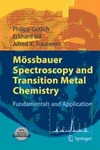Fundamentals and Application
TMössbauer spectroscopy is a profound analytical method which has proven to be a powerful tool for characterizing materials and as such has extensively been employed in various disciplines of solid state research. It has significantly developed further in recent years, both from the experimental point of view as well as regarding its manifold applications. The authors present a state-of-the art book which concentrates on teaching the fundamentals, using theory as much as needed and as little as possible, and its use in practical applications. Some parts of the book are based on the first edition published in 1978 in the Springer series 'Inorganic Chemistry Concepts' by P. Gütlich, R. Link, A.X. Trautwein. Particular emphasis is put on useful practical aspects of measurements. Updates are included on the computation of Mössbauer parameters with modern techniques, the treating of magnetic relaxation phenomena, special applications in coordination chemistry, the use of synchrotron radiation to observe nuclear forward (NFS) and inelastic scattering (NFS), and the miniaturization of a Mössbauer spectrometer for mobile spectroscopy in space and on earth.
The book contains the following chapters: (1) Introduction, (2) Basic Physical Concepts, (3) Experimental, (4) Hyperfine Interactions, (5) Quantum Chemistry and Mössbauer Spectroscopy (F. Neese, T. Petrenko), (6) Magnetic Relaxation Phenomena (S. Morup), (7) Mössbauer-Active Transition Metals Other than Iron, (8) Special Applications of 57Fe Mössbauer Spectroscopy (1. Spincrossover Phenomena in Iron(II) Complexes; 2. 57Fe Mössbauer Spectroscopy: Unusual Spin and Valence States; 3. G. Klingelhöfer and I. Fleischer: Mobile Mössbauer Spectroscopy with MIMOS in Space and on Earth), (9) Nuclear Resonance Scattering Using Synchrotron Radiation. Ca. 575 pages.
A CD-ROM is attached which contains the following parts: (I) Teaching course on Mössbauer Spectroscopy: Principles and applications (P. Gütlich); (II) Selected applications of Mössbauer Spectroscopy for teaching purposes (contributions from different groups); (III) Computation and interpretation of Mössbauer Parameters (1. P. Blaha; 2. M. Grodzicki and S. Lebernegg; 3. F. Neee and T. Petrenko): (IV) Properties of isotopes relevant to Mössbauer Spectroscopy (contribution from J. G. Stevens et al.); (V) P. Gütlich, R. Link, A. X. Trautwein: ?Mössbauer Spectroscopy and Transition Metal Chemistry?, 1st edition, Springer-Verlag, Berlin-Heidelberg-New York 1978.
The book is scheduled to appear in November 2010.

